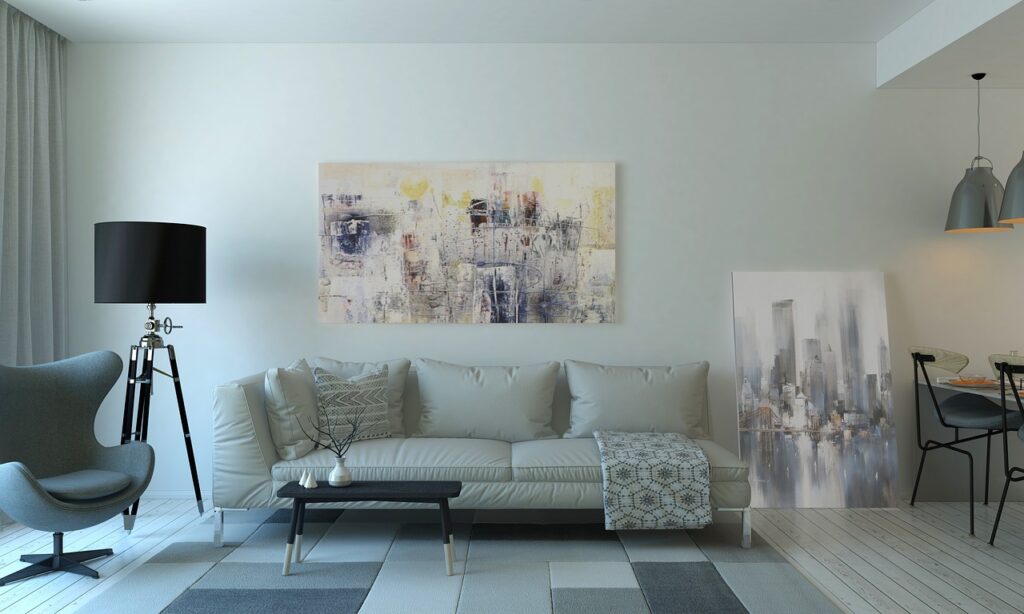Achieving a cohesive look in your interior design is one of the most important steps to creating a harmonious feel in your space. Every detail works together to create a unified and cohesive design. Today, we’ll explore some tips that can help you create a complementary and harmonious look for your rooms.
Table of Contents
- Define the Focal Point of Your Room
- Color Coordination
- Pay Attention to Textures
- Accessories as Complements
- Lighting
- Flow Between Spaces
- Conclusion
1. Define the Focal Point of Your Room
The classic definition of a focal point is what your eyes are drawn to when you first enter a room. This could be a wall and what’s on it, such as decorative tiles, wallpaper, or furniture placed near it. Identify the architectural features of your room and build your interior design around these unique elements. Determine the central point of your room and design the interior around these focal areas.
Here are some common examples of what can serve as a focal point in a room:
- A fireplace or mantelpiece
- An accent wall with bold colors or patterns
- A large piece of artwork or wall decor
- A statement piece of furniture, such as a sofa or dining table
- A large window or a scenic view
- A unique lighting fixture or chandelier
- A feature wall with textured materials, like stone or wood paneling
- An indoor plant or a vertical garden
2. Color Coordination
When creating a unified interior design, color is one of the most crucial tools you can use. When choosing your doors, windows, accessories, and more, make sure to use a color palette that can unify these elements into a cohesive picture. If you are using cool tones, select windows and doors in similar hues, like steel or brushed aluminum. For warmer tones, windows with wooden frames in rich colors would be an excellent choice.
3. Pay Attention to Textures
The next important aspect that undoubtedly catches the eye is texture. Just as with colors, a cold palette pairs well with smooth, glossy tiles, while a wooden style benefits from matte textures. When selecting materials, consider how their textures will complement each other. Harmonizing textures will add depth and interest to your interior design without overwhelming it.
4. Accessories as Complements
Door handles, window latches, curtains, and more can be powerful tools in the right hands, or a source of discord in others. Choose accessories that resonate with the materials and overall look of your design. Consider the size of your room to avoid making it too cluttered. Try to enrich the space without overwhelming it. Combine tall elements with low ones, wide with narrow, and aim for harmony in diversity.

5. Lighting
Similarly, lighting can tie a space together or highlight inconsistencies in design. Ensure that your lighting choices complement the materials, colors, and textures of your room. Warm lighting pairs well with wooden elements, while cooler lighting is better suited for spaces with metal windows or door frames. Good lighting ensures that you highlight the important architectural or design features that form the foundation of your room.
6. Flow Between Spaces
In many homes, the flow between different rooms is just as important as the design of the rooms themselves. Make sure that the elements of adjacent rooms harmonize with each other. Consistency in materials and design for connected spaces will create a seamless transition and add to the cohesive overall design of your home.
Conclusion
Creating a cohesive space is an art that involves carefully selecting every element within a room. By using the tips mentioned above, such as coordinating colors, harmonizing textures and accessories, and balancing patterns, you can achieve a beautifully unified design that feels both intentional and natural. Whether you are designing a single room or developing the look of an entire home, Compel Inc. can help you bring your vision to life with style. Contact us now.



